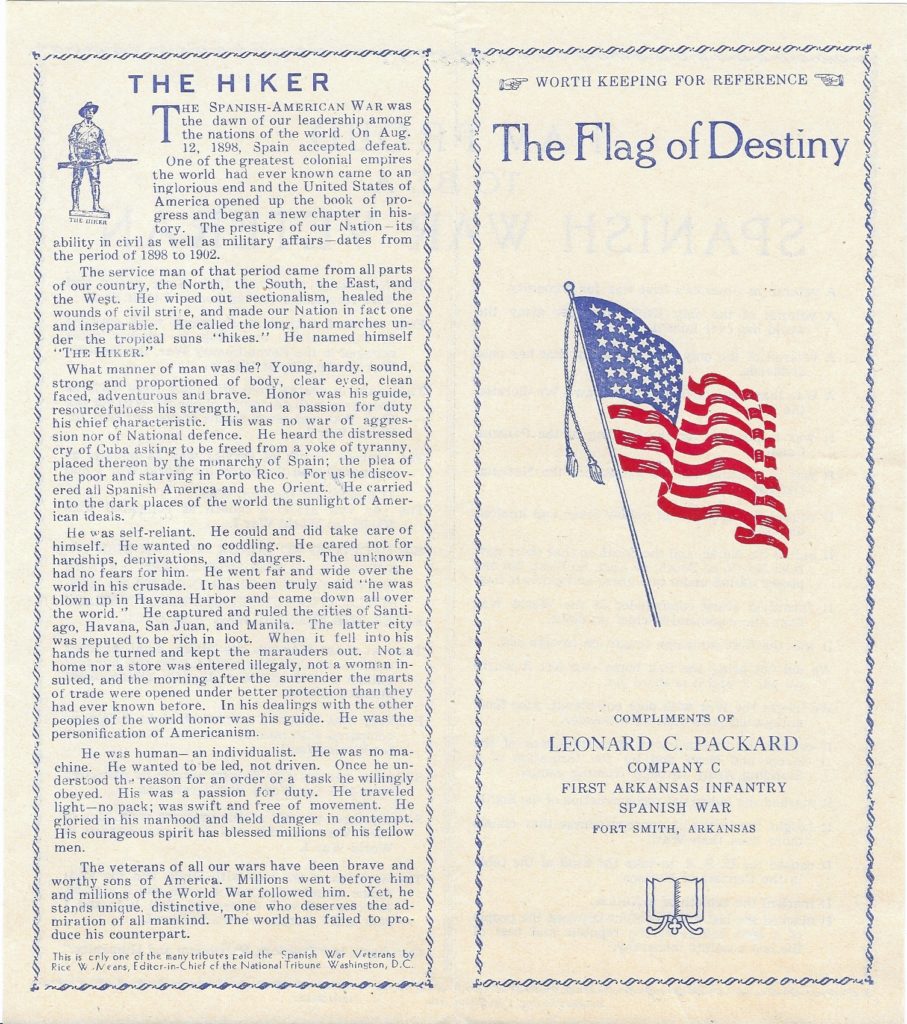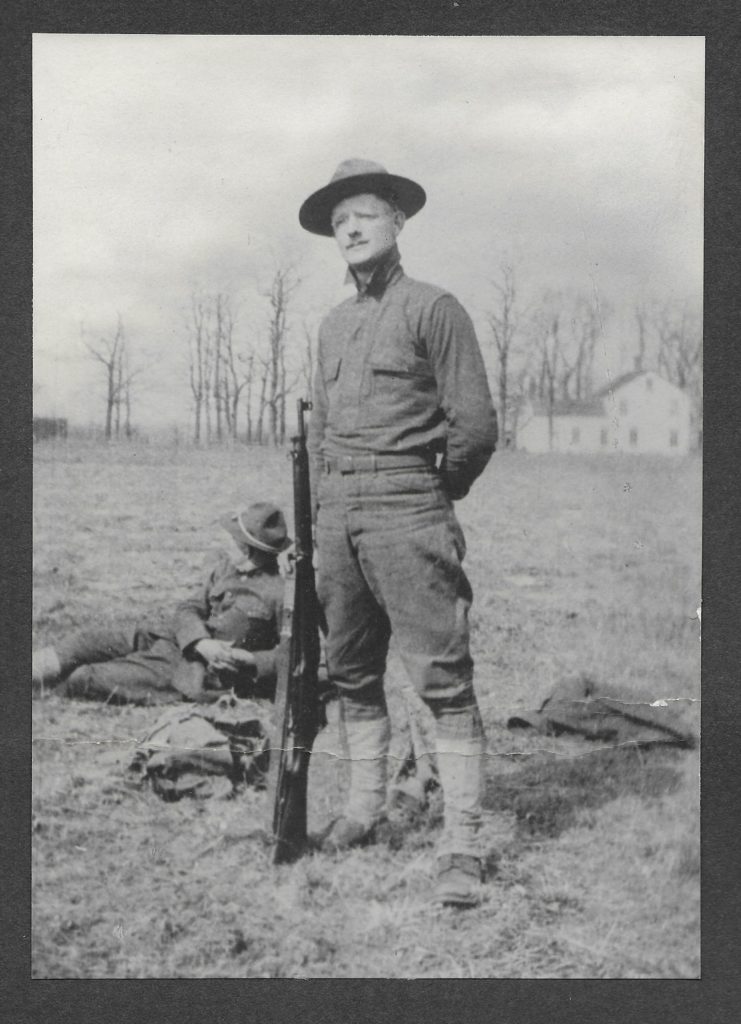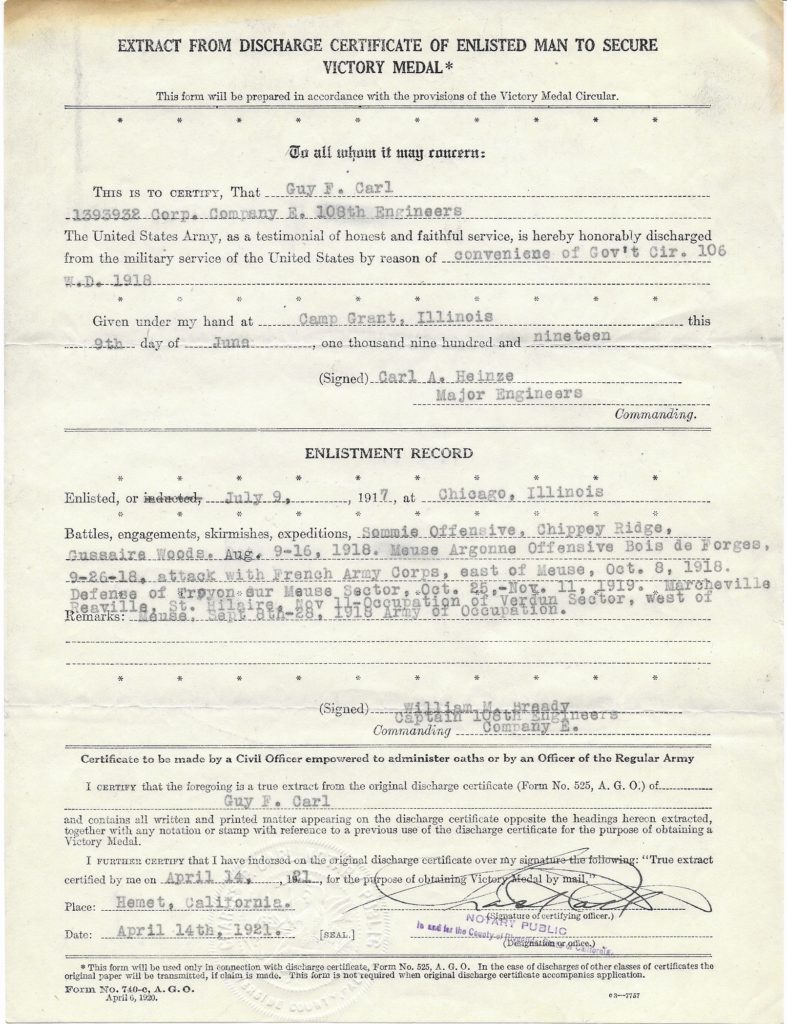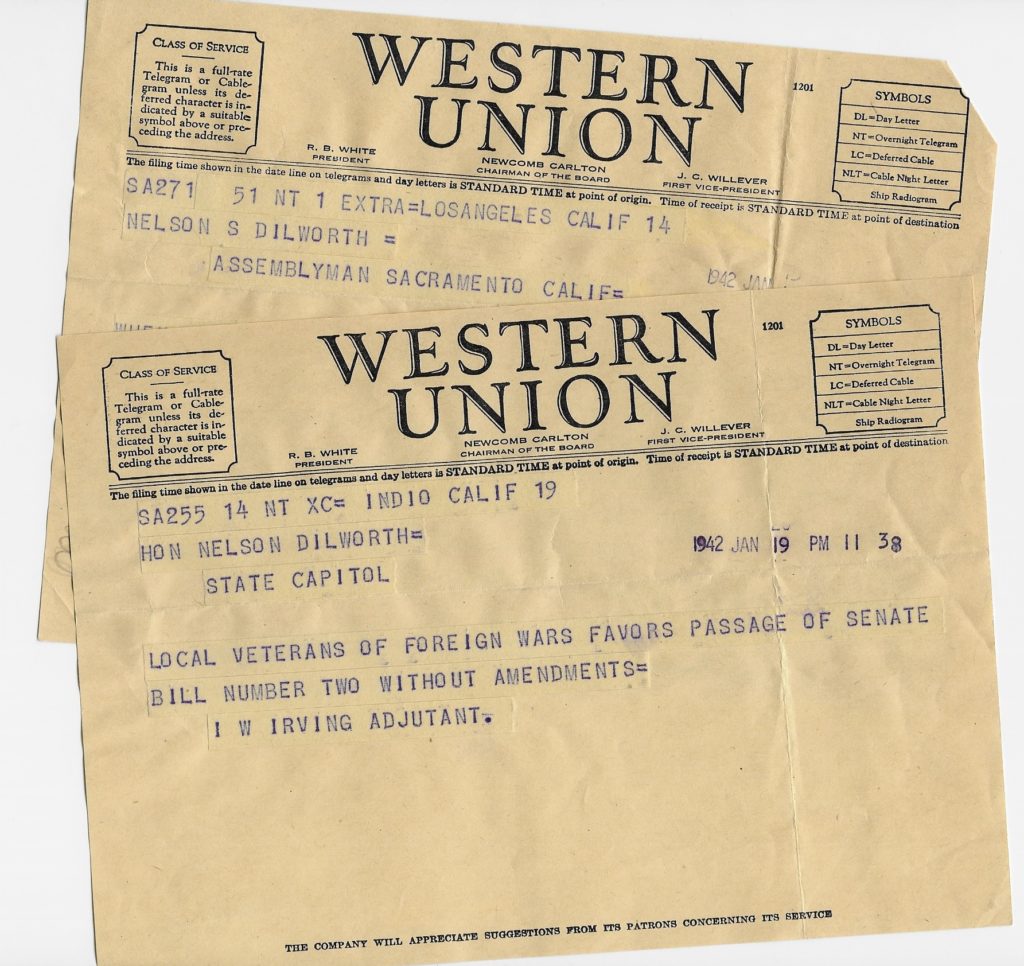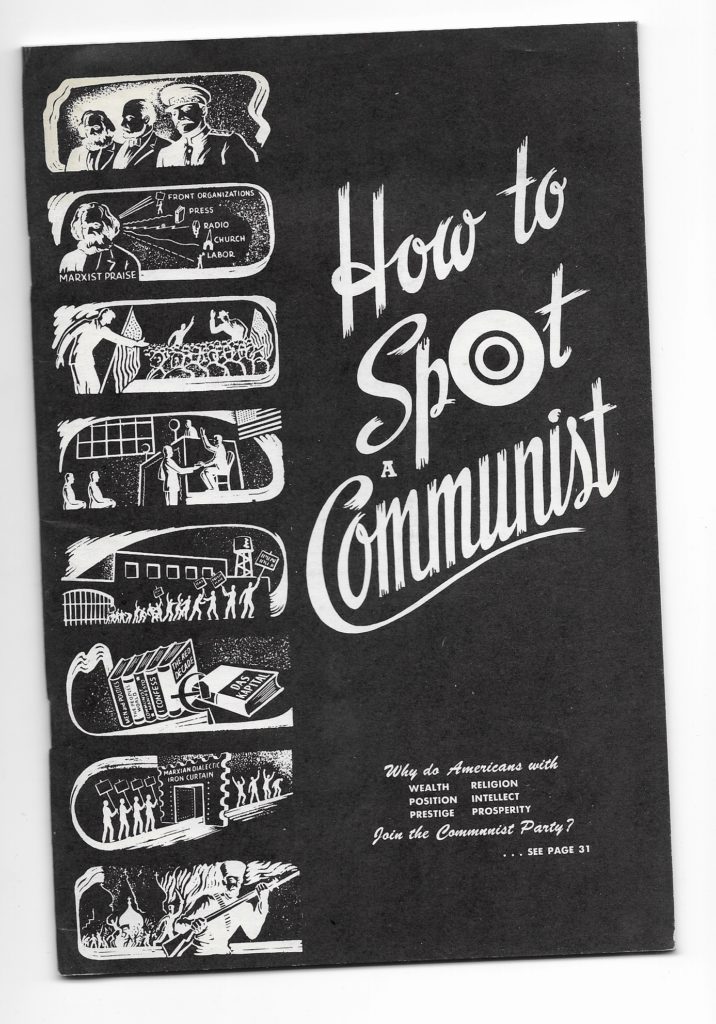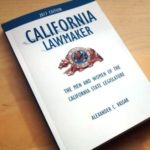As a veteran of World War I, as an active member of the American Legion, and in his official capacity as a member of the State Senate Military and Veterans’ Committee, Nelson Dilworth had a lengthy involvement in California’s military history. From his interactions with veterans of the Civil War and Indian Wars to his role as a lawmaker during World War II, Dilworth worked to build the state’s strategic importance, while also working to expand services to veterans. Dilworth also had a front row to the federal internment of Japanese Americans during the war.
His service continued during the Cold War period, during which he successfully authored legislation to expand the number of National Guard facilities throughout the state, seeing California as a crucial front in the nation’s defense strategy.
Early Conflicts
Through his work in the legislature, Dilworth maintained contact with veterans organizations from prior conflicts including Indian Wars and Spanish American War.
Documents:
1930s A brochure for the Spanish American War Veterans organization (front and back)
1939 (Oct 1) Letter Indian War Veterans re event invitation
1937 (Nov 10) Letter United Spanish War Veterans re fishing licenses for veterans
Mexican Expedition
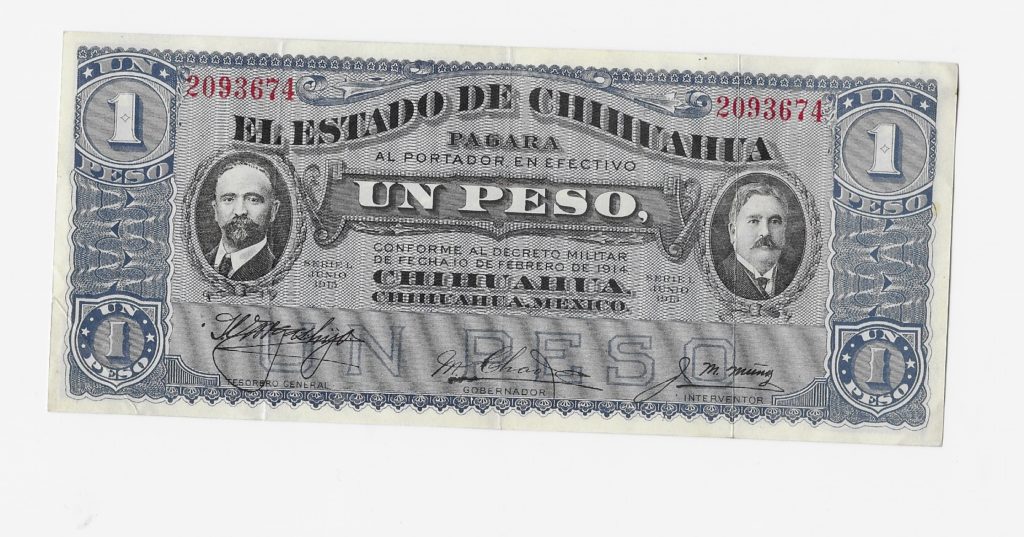
Dilworth had just received his appointment as a rural letter carrier in Hemet when the crisis at the southern border escalated into the Pancho Villa Expedition in early 1916. Dilworth made contact with the local National Guard unit based in Riverside, and they encouraged him to see if it might be possible for him to take a leave from the post office in order to join their upcoming deployment to Mexico.
Dilworth made contact with the post office about the possibility but they made it clear that under no circumstances would that be possible (short of Dilworth resigning his appointment). Having just spent several years attempting to secure that employment, Dilworth stayed put in Riverside. He did, however, receive an Un Peso note from a local soldier participating in the expedition.
Documents:
1915 Currency – “Un Peso de Chihuahua” (brought back to California by returning National Guard soldiers)
1916 (May 15) A letter from the A letter from the Fourth Assistant Postmaster General about postal employees joining the National Guard
1916 (June 6) Letter California National Guard Captain Walter Davidson about meeting up to discuss membership in the National Guard
World War I
World War I had a massive impact on California, transforming the state both economically and socially. The booming war economy led to a surge in industrial activities across the state as California became a crucial hub for wartime production. The demand for agricultural products, particularly fruits and vegetables, soared, leading to increased cultivation and expansion of farmlands. The state’s natural resources, such as oil and timber, also played a vital role in supporting the war effort. The establishment of military bases and training camps further fueled California’s economic growth, attracting a large influx of migrants seeking employment opportunities in the defense industry.
Socially, the war had a profound impact on California’s demographic landscape. The migration of people from other parts of the country in search of jobs in the war industries contributed to the state’s population growth. The cultural diversity of California expanded as various ethnic groups arrived to contribute to the war effort. Additionally, the state became a destination for soldiers returning from the frontlines, leading to the development of veteran communities. World War I left a lasting imprint on California, shaping its economic trajectory and fostering a more diverse and dynamic society.
“Hewitt Roblee was in a great many narrow escapes, at one time lying flat on his face under the ambulance to escape shrapnel fire.”
Fomer Assemblyman Miguel Estudillo (letter of May 18, 1934)
Documents:
1918 Photograph of Harold Hyland (a schoolteacher from Hemet who deployed to France and was killed in action on September 1, 1918). The American Legion Post 53, in Hemet, was named for Hyland.
1934 (May 18) Letter from former State Senator Miguel Estudillo about his service in WWI
1921 (April 14) A notarized application by Guy F. Carl of Hemet for a WWI Victory Medal
1920s Notes by Nelson Dilworth about injuries sustained by local veterans (Riverside County) during their service in WWI.
1939 Legislation (Assembly Bill 737 of 1939) calling on the state to collect sapling trees from the battlefields of WWI to be planted on the grounds of state facilities.
1938 (Nov 1) Campaign flyer from the Veterans Nonparisan League regarding the gubernatorial contest between Merriam and Olson
American Legion Documents:
1919 (Aug 18) Letter from American Legion rejecting the first attempt to charter a post in Hemet
1919 (Oct 8) Booklet of Resolutions from the First American Legion Convention in California
1919 American Legion Bylaws and Constitution
1919 (Oct 18) Program for 1st American Legion Convention in CA
1919 (Oct 21) Letter American Legion re new Hemet Post
1919 (Nov 9) Envelope from San Bernardino American Legion Post
1922 American Legion IDs
1960 Photo American Legion group
1960 Photo American Legion group
World War II
It’s hard to overstate the impact that the second World War had in California which, with a large population and a broad range of suitable locations for industry, was launched into a position of strategic importance for the Allied war effort. The demand for military aircraft, ships, and other wartime supplies led to an unprecedented industrial boom, turning California into a key center for defense production. Cities like Los Angeles became major hubs for aircraft manufacturing, with companies like Lockheed and Douglas Aircraft playing crucial roles in supplying the Allied forces.
In the final months before the attack at Peal Harbor, tensions were rising as nations around the world fell into war. In California, legislators were working on a gradual expansion of the California State Guard.
“I have just been through the Iwo Jima and Okinawa Campaigns with a goodly cross section of future American voters and it is my impression that they will not take kindly to surrendering liberty for any “cradle to grave” security. I have seen them fight and die for liberty and I believe they would rather fight for security too.”
Lt. Commander J. Norman O’Neill (from a 1945 letter written aboard the USS Bladen)
Documents:
1941 (Feb 1) Letter from Leland Yost about the California State Guard and High School Cadet Corps
1941 (Dec 29) Letter from Karl Glasbrenner at Glen Falls Insurance about the State Guard Bill and his status as a Private First Class in the State Guard.
1942 (Jan 12) Letter from Leland Yost about the State Guard bill
1942 (Jan 19 Telegram from American Legion regarding the State Guard bill
1942 (Jan 21) Telegram Rev Carruthers USS Oklahoma Chaplain
1942 (Jan 31) A letter from Hunter Engineering (of Riverside) regarding their application to receive military protection as a defense plant.
1942 (Feb 4) A letter from the Food Machinery Corporation regarding their plant being “extensively engaged in defense work” and working with the military to get police protection.
1942 (Feb 11) Resolution by the City of Beaumont to the Defense Council about the State Guard
1942 (Aug 17) A 1942 letter from the California Bureau of War Minerals Production regarding the production of strategic minerals (including tungsten)
1943 (Feb 22) Telegram R E Combs re Am Legion visit to Manzanar
1943 (Dec 11) Letter from the First Congregational Church about State Guard chaplains
1945 (June 5) A letter written in August 1945 by a sailor on a ship near the Ryukyu Islands (and a sample of the local currency used there during the war)
1945 (June 11) Letter J Norman Oneill USS Bladen re UNKNOWN
1943 REPORT: Japanese Resettlement
1943 (June 23) Letter Desert Sentinel re return of Japanese Americans from internment camps
Post WWII
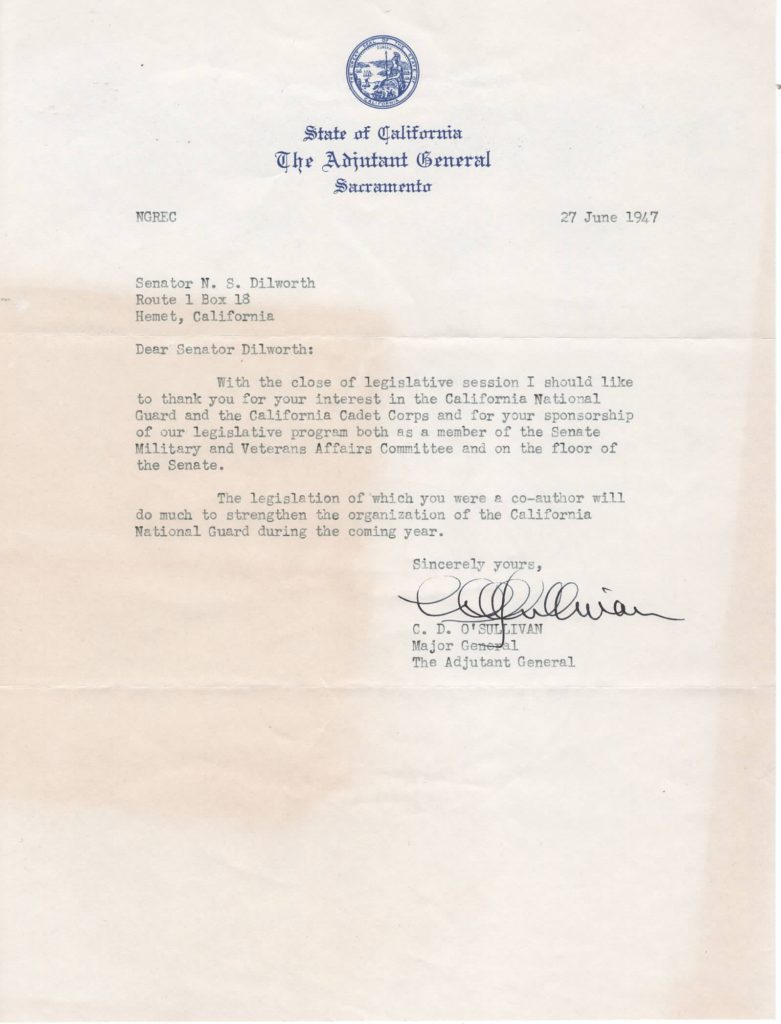
During the war, the state experienced a surge in population as war industries drew workers and their families, leading to rapid urbanization. The expansion of military bases, such as Camp Pendleton and Naval Station San Diego, not only bolstered the state’s defense infrastructure but also contributed to the establishment of a robust military presence. After the war, California continued to thrive as returning veterans, many of whom had trained or served in the state (including Leroy Greene) settled there, further shaping its post-war identity as a dynamic and diverse region.
“The fact that about one-third of our veterans did not previously reside in California should have a very chastening effect when we contemplate inviting others to come to our State…”
Former Assemblymanm Clifton E. Brooks (letter of March 21, 1947)
Documents:
1945 (Oct 3) Letter from Governor Earl Warren about returning veterans
1945 REPORT: Vocational Training for Veterans
1945 REPORT: CUAC and Japanese Problem
1947 (June 27) Letter from the California Adjutant General Victor Hansen regarding the California Cadet Corps
1946 (Jan 3) Letter from the California Adjutant General Victor Hansen re armories
1949 (July 12) Letter from the National Guard regarding a missing soldier
1946 (Feb.) Booklet about the California Legislature’s Special Session for Veterans Legislation
1947 (Mar. 21) Letter from Clifton Brooks (a veteran of World War I who served two terms in the State Assembly immediately after the war) about veterans legislation (page 1 and page 2)
Cold War
Even as California worked to adapt to the post-WWII political realities, the role of the United States as a counterweight to the growing influence of the Soviet Union brought additional changes to California. The state housed numerous military installations and defense-related industries, playing a pivotal role in nuclear weapons development and aerospace research.
These developments led to California’s role in the national tensions about the influence of communists in American society, and within the military and civil government. The investigation of atomic scientist J. Robert Oppenheimer by the federal House UnAmerican Activities Committee had its roots in a state legislative committee (frequently cited as the California UnAmerican Activities Committee) which looked into accusations against Oppenheimer on the basis of his employment by the state*. The Cold War left an indelible mark on California, shaping its economic, technological, and social trajectory for decades to come.
“It has been suggested by a local representative of the F.B.I. that we write to you, as a member of the committee on Un-American activities in California, for information regarding a matter which has come to our attention. A short time ago the Y.W.C.A. was accused of sponsoring a communistic organization by allowing a group to hold meetings in our building.”
Florence M. Wirt, Executive Director of the Young Women’s Christian Association of Riverside (from a letter of June 24, 1947)
Documents:
1943 (Mar 15) Documents Communist recruitment
1943 (Aug 20) Letter SOS Frank M Jordan re Communist ballot law
1950 AGITPROP Booklet Communist and Communist Front Org…
1950 AGITPROP Booklet How to Spot a Communist
1950s Flyer Communist Event
1950s Flyer Communist Books
1957 (Jan 1) Constitution of the Communist Party of the USA
1957 (Mar 29) Telegram re Linus Pauling Communist
1957 (June 5) One example of legislation attempting to limit the employment of communists as California state employees is Assembly Bill 299 of 1957 by Assemblyman Frank Luckel. Additionally, found with the bill was a note from Assemblyman Luckel asking Dilworth to present the bill when it arrives on the Senate floor.
Korean War
1953 (May 30) Senate Daily Journal with a Memorial Day prayer for the soldiers in Korea by Nelson Dilworth: “Bless our young men who stand in our stead on the far flung battle lines. Give them great courage and strength for valiant endeavor. At this moment the first morning light of early dawn is breaking over our soldiers in Korea after a long night of bloody strife.”
